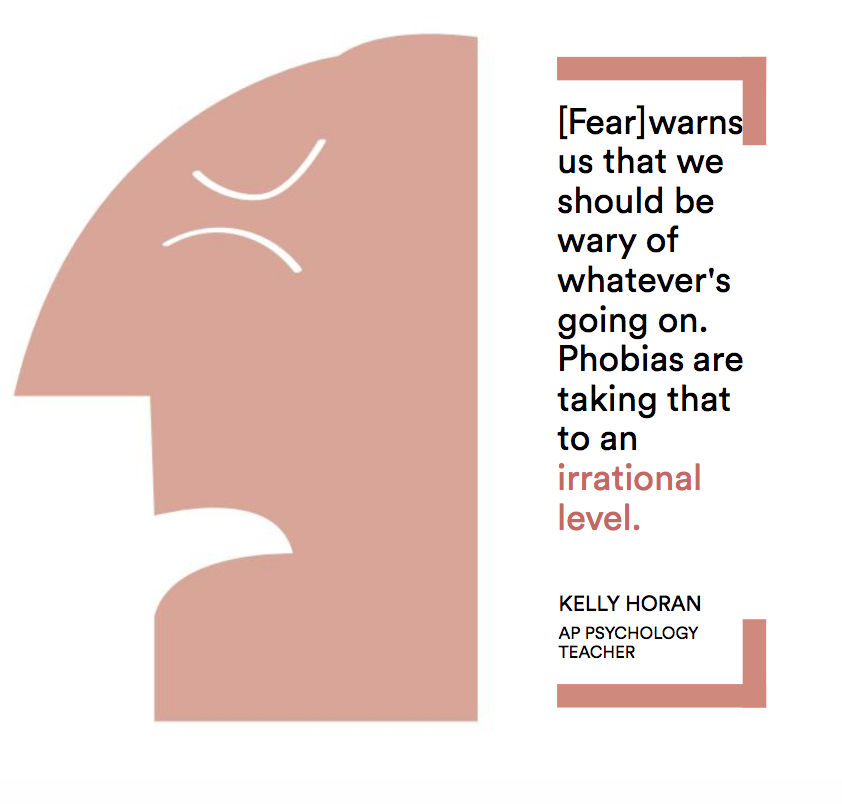Never fear? Students reveal stories behind phobias
December 19, 2016
Emilie Sanche (10) did not always have a phobia of needles. When she was younger, she would sometimes watch the needle being inserted to her arm during blood tests.
She still did have a negative experience with needles—once, during a blood test at age two, five hospital employees held her down to allow an additional two to draw blood.
“Besides that, there wasn’t really any traumatic event involving needles that would cause me not to like them or to be afraid of them,” she said. “It just sort of happened: starting a few years ago, due to having more frequent blood tests, something just flipped in my mind and it just became terrifying for me.”
Now, her phobia is pervasive enough that she avoids shots and blood tests whenever possible, making it more than just a fear.
“When I had to have my blood drawn, I had a panic attack that lasted about half an hour, and it took another half an hour to calm me down,” she said. “In the end, it took over an hour and fifteen minutes to just get my blood drawn, and this happens every time.”
Specific phobias, like Emilie’s are definitionally different from fears in being more extreme and irrational and having a tangible, significant effect on everyday life.
The Diagnostic and Statistical Manual of Mental Disorders (DSM-5), published by the American Psychiatric Association, explains that fears are only diagnosable as phobias when they produce an immediate anxiety response; are unreasonable and out of proportion to the real danger of the feared object or situation; causes extreme avoidance of the fear-inducing object; andpersists for more than six months.
“Everybody has fear. Fear is a natural emotion to feel, especially when you’re in trouble; it warns us that we should be wary of whatever is going on,” AP Psychology teacher Kelly Horan said. “Phobias are taking that to an irrational level.”
Maile Chung (12) fears falling and any pain or injuries incurred from falling, but she doesn’t believe it affects her everyday behavior enough to be classified as a phobia, nor does she undergo any forms of therapy for her fear.
“When I was little, I was a roughhouser, so I would always like play really rough and then I would fall but then I would just get back up,” she said. “I think I kind of ignored the pain, and as I got older, the pain kind of lingered and I was more aware of it, and that kind of made me afraid to do things because I was afraid of the pain.”
Another fear of some Harker students—as evidenced by the art wall where the largest, boldest response to the “Fear is…” prompt was “Dec 15,” the release date for some early college application results—is failure relating to school or college applications.
“What I [have been] most scared of during high school is that I won’t be able to get into the colleges that I want because I think that every student should be able to be accepted into the college they want,” Vivian Wang (11) said. “Everyone works hard and they try their best to be the best they can be, and it’s sort of unfair that a lot of students don’t get their dream to become true.”
Therapy can help in overcoming or working through phobias. In exposure therapy, a patient faces the object of their phobia under guidance from a professional, while in cognitive behavior therapy, therapists help patients evaluate their behaviors to minimize harmful thinking.
“I think fears are something that everyone can at some point in their life come over, but I think [you should] just take it slow and be comfortable with how you deal with it,” Maile said. “Fears are a real obstacle in [people’s] life, and they should take it slow, like baby steps.”
